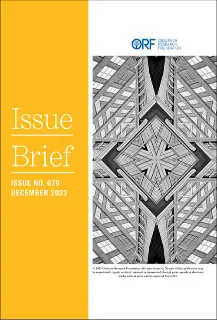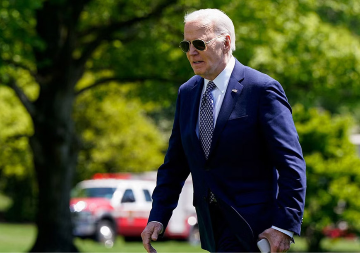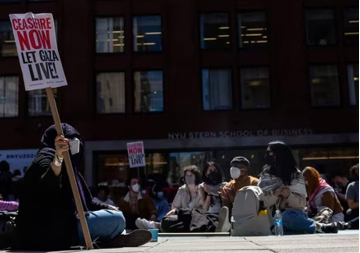Introduction
In light of the growing Chinese threat to Taiwan, the real question is whether current US policy will be able to deter an invasion and avoid a war in the Taiwan Strait simultaneously. It is instructive to look back a little in history when the Republic of China (ROC) was a permanent member of the UN Security Council and continued to be recognised as such even after the Nationalists fled to Taiwan in 1949 and claimed to represent the whole of China as part of the ROC, while enjoyed the US’s diplomatic recognition.
A closer reading of the history of the US’s Taiwan policy, best exemplified by the term ‘strategic ambiguity,’ may give rise to a degree of scepticism. The issue today is whether this policy will work in the event of an extreme case scenario involving a Chinese military offensive in Taiwan. The current cross-Strait situation is a compelling moment for the US to take stock of its strategic ambiguity and examine whether it is sufficient to meet the challenge of Chinese intent and power projection over Taiwan. The US must also take a more explicit public stand that it cannot afford to lose Taiwan, essentially effecting a pivot of the US regional posture.
A History of the US Positions on Taiwan
It is pertinent to note that when the Harry Truman administration made a statement about the Formosa[a] issue on 5 January 1950, he clearly averred that the US had “no predatory designs on Formosa,” nor would it intervene in the civil conflict between the People’s Republic of China (PRC) and the ROC.[1] On 27 June 1950, during the Korean War, the Truman administration issued another statement advocating a position of neutrality in the Taiwan Strait to prevent the Korean conflict from spreading. The aim behind deploying the Seventh Fleet in the Strait was not only to deter the PRC from undertaking any misadventure but also to restrain the ROC from attacking the mainland. In fact, the 27 June 1950 statement also stated that “the determination of the future status of Formosa must await the restoration of security in the Pacific, a peace settlement with Japan, or consideration by the United Nations.”[2] However, later, the US began to veer towards a more explicit position in favour of Taiwan’s security.
Mutual Defense Treaty between the US and the ROC
The ‘Mutual Defense Treaty between the United States and the Republic of China’ of December 1954, which was ratified in February 1955 and entered into force in March 1955, is a case in point. Article II of the Treaty enjoined the two sides “separately and jointly by self-help and mutual aid [to] maintain and develop their individual and collective capacity to resist armed attack and communist subversive activities directed from without against their territorial integrity and political stability.”[3] Article V focused on deeming “an armed attack in the West Pacific Area directed against the territories of either of the Parties [as] dangerous to its own peace and safety and declares that it would act to meet the common danger in accordance with its constitutional processes.”[4] Broadly, Article VI of the treaty defined the terms “territorial” and “territories” in respect of the “Republic of China” to mean Taiwan and the Pescadores; and in respect of the US, the island territories in the West Pacific under its jurisdiction. The treaty stated that “the provisions of Articles II and V will be applicable to such other territories as may be determined by mutual agreement.”[5] Theoretically, therefore, it appears that the two sides could have decided, if required, to deem the treaty’s provisions to be applicable to Taiwan’s offshore islands, such as Jinmen and Matsu, just off the mainland.
What is noteworthy is that during the First Taiwan Strait crisis, the PRC had begun to shell Jinmen with artillery in September 1954, and this was followed by a similar bombardment of Matsu and Tachen, which led to the conclusion of the mutual defence treaty in December of that year. In January 1955, the PRC captured the offshore Yijiangshan islands from the ROC, even though the US Seventh Fleet lurked nearby. The mutual defence treaty entered into force in March 1955, but the Eisenhower administration pushed through the Formosa resolution in January 1955 to permit US armed forces to secure and protect Formosa and the Pescadores from any attack by the communists. Notably, such assurances did nothing to deter the PRC from carrying out its bombardment, which continued until May 1955. Notably, the Formosa resolution resulted in the US armed forces assisting Nationalist forces in evacuating the Tachen islands. The US also briefly considered using nuclear weapons, but the Soviet Union threatened to intervene on the side of the PRC, pointing to the possibility of a World War, and forcing the US to confine itself to conventional intervention of a limited nature.
The Second Taiwan Strait Crisis in August 1958 witnessed a naval skirmish off the Dongding offshore island when the PRC attempted a naval landing. Aerial dogfights also took place, with ROC F-86 Starfighters getting the better of the PRC’s MIGs. The US took the line that it would not intervene unless the threat to the offshore islands were of a magnitude that implied a direct threat to Taiwan. Towards the latter part of the year, the US did take a tougher line to end the crisis. Taiwanese leader Chiang Kai-shek was compelled to state that “the principal means of successfully achieving” the “sacred mission” of restoring “freedom to [the Chinese] people on the mainland” was “the implementation of Dr. Sun Yat-sen’s three people’s principles (nationalism, democracy and social well-being) and not the use of force.”[6]
Taiwan was not used as a lever by the US in its confrontation with China during the Korean War, even as it supplied arms to Taiwan deemed sufficient for defensive purposes. Thus, despite the Mutual Defence Treaty, the US exercised enough ‘strategic ambiguity’ to put the PRC at ease. The treaty was terminated on 1 January 1980 during President Jimmy Carter’s term, exactly one year after the US established diplomatic relations with the PRC.
The Taiwan Relations Act of 1979
The Taiwan Relations Act (TRA) of 1979, which replaced the Mutual Defence Treaty, gave greater play to the US’s ‘strategic ambiguity’. The TRA contains certain key provisions, such as Sec 2(b), under which the US is “to consider any effort to determine the future of Taiwan by other than peaceful means, including by boycotts or embargoes, a threat to the peace and security of the Western Pacific area and of grave concern to the United States;”[7] “to provide Taiwan with arms of a defensive character;”[8] and “to maintain the capacity of the United States to resist any resort to force or other forms of coercion that would jeopardize the security, or the social or economic system, of the people on Taiwan.”[9] US neutrality towards the reunification of Taiwan with the mainland is abundantly clear from the language of the TRA. The emphasis is on achieving reunification through peaceful means, not on reunification per se. The terms of the TRA also implied that the US would not countenance any military adventurism on the part of Taiwan. In the decades since then, especially during the Chen Shui-bian presidency (2000-2008), the US clarified that its commitments under the TRA would abide only if Taiwan eschewed unilateral provocations.
Bill Clinton’s Three No’s
After the third Taiwan Strait Crisis (1995-1996), in a bid to normalise relations with China, then US President Bill Clinton declared the “Three No’s” policy in June 1998 in his public affirmation in Shanghai when speaking about US policy on Taiwan—no to Taiwan independence, no to “One China One Taiwan,” and no to Taiwan representation in international organisations where statehood is a pre-requisite. It is a fact of history that “the United States acknowledges that all Chinese on either side of the Taiwan Strait maintain there is but one China and that Taiwan is a part of China. The United States Government does not challenge that position.”[10] In essence, the US posture appears to be limited to the twin objectives of neither supporting China’s unilateral use of force nor provocations by Taiwan.
The Need to Move from ‘Strategic Ambiguity’ to ‘Strategic Clarity’
The strategic ambiguity in US policy has come under pressure due to the PRC’s increased muscle-flexing in the Taiwan Strait after Tsai Ing-wen of the Democratic Progressive Party (DPP) became president in 2016. The visit of Nancy Pelosi, the then Speaker of the US House of Representatives, to Taiwan in August 2022 further fuelled tensions, leading to a situation akin to the Taiwan Strait Crisis of 1995-96 and stoking fears of a possible blockade of Taiwan. One can argue that the DPP’s non-acceptance of the ‘One China Principle’ or the ‘1992 consensus’[b] has exacerbated the security situation. Unlike the past, the new generation in Taiwan is more supportive of the DPP’s position on cross-Strait relations. This fact is hard to reverse for any future leadership, regardless of political affiliation. This has also pressured the US leadership to adopt a clearer position. In a television interview in September 2022, US President Joe Biden explicitly stated that the US would defend Taiwan in the event of an unprecedented attack, though the White House later nuanced the statement.[11] If the PRC is to be deterred from attempting a forcible takeover of Taiwan, the US needs to maintain a tough political and military stand against reunification by force, reinforced by the exhortation that peaceful resolution through dialogue and negotiations remains the only way forward. Anything short of that is tantamount to turning a blind eye to China’s aggressive forays and incremental probing of the limits of the so-called policy of strategic ambiguity.
At stake is the US’s credibility. The US has been the most important factor in ensuring the balance of power and stability in the Asia Pacific since the Second World War. It entered two wars, in the Korean peninsula and Vietnam, to prevent abrupt unilateral change in that balance of power by states and ideologies inimical to the interests of the US and the liberal order. Despite mixed success in Korea and a denouement in Vietnam, the intent and messaging emanating from Washington was strong and reassuring. Clearly, such a position contributed to regional stability. As such, the need of the hour is for the US to maintain a steady and tough line in the context of Taiwan.
Taiwan’s Importance for the US in the Indo-Pacific
The US has several bases in the Asia Pacific and myriad treaty and alliance partnerships in the region, including with Japan, South Korea, and the Philippines. Security arrangements bind it with Singapore, Malaysia, and Thailand as well. Its investments worth US$1 trillion and nearly double that figure in terms of trade across the region are worth protecting, and their future cannot be delinked from the security paradigm.
If Taiwan were lost to the PRC, it would not only allow the latter to access cutting-edge technologies (such as semiconductors) but also a talented and experienced pool of technical human resources. Bringing Taiwan into its fold would result in heightened economic and high-tech intersectionality with the rest of the world of the type that limits the West’s options vis à vis the PRC's purposeful and single-minded march towards establishing a ‘new type of great power relations.’ If Taipei were to fall to Beijing, the PRC would inherit a new hub and spokes arrangement that could accelerate its economic rise. Though dwarfed by the PRC’s economic juggernaut, Taiwan's considerable GDP would also straightaway add approximately US$800 billion to the former’s economy, helping to further narrow the PRC’s gap with the US, both qualitatively and quantitatively. Of course, it could be argued that Taiwan’s prowess in semiconductors and other high technologies rests on trust and credibility and that if Taiwan were forcibly annexed, these supply chains would most likely collapse. Many Taiwanese engineers and experts might flee the island rather than subject themselves to the PRC's rule.
From the point of view of the strategic balance of power in the Western Pacific, Taiwan's fall would be a huge breach in the first island chain; it would pave the way for the expansion and projection of Chinese naval power into the Pacific Ocean, both surface and sub-surface. This, in turn, could threaten Guam, the US naval presence throughout the Western Pacific, and commercial shipping and other sea lanes of communication in Micronesia, Polynesia, and Melanesia, all the way down to Papua New Guinea and Australia.
Japan would be most traumatised by US inaction on Taiwan. In such an eventuality, it would probably rush to acquire nuclear weapons and, over time, see little value in a US security presence and security umbrella. It may be tempted to reach a modus vivendi with the PRC, to buy peace backed by a nuclear deterrence of its own, and perhaps even run the risk of being relegated to a second-class status in the region. The economic interdependence for such a scenario already exists between the two nations. If Japan goes nuclear, South Korea will not be far behind in seeking a nuclear deterrence of its own against the independent threats posed by North Korea, the PRC, and Japan in the long term. Equally, the fall of Taiwan, accompanied by US inaction, could convince South Korea to abandon its new Indo-Pacific vision and revert to past policies centred around the Korean peninsula and China. Australia, another country heavily dependent on the PRC's market for its own prosperity, may also be tempted to revert to the past when economic logic trumped all else.
The US posture in the Pacific is predicated on a strong First Island Chain, running across Japan, Taiwan, the Philippines, and Indonesia. It is thinly spread beyond that, with just four bases, including Guam and Kwajalein in the Republic of the Marshall Islands as part of the Compact of Free Association (COFA) arrangements. Other COFA arrangements are with the Federated States of Micronesia and Palau. Once the PRC has full control over Taiwan, it does not have to worry about entering the Pacific through the Bashi Strait to the south of Taiwan or the Miyako Strait to the north of the island territory. The PRC would have a freer hand to send out its aircraft- and carrier-based task forces and lay sonars in the deep Mariana trench that abuts Guam and, to its east, in the broad expanse of the Pacific Ocean. This could significantly enhance its capacity to monitor US submarines using SOSUS (Sound Surveillance System). All this would make a huge difference to the balance of power and threaten the naval presence of the US and others, apart from the potential adverse impact it could have on merchant shipping in conflict situations. Read in tandem with recent Chinese machinations in the Solomon Islands (which, along with Kiribati, recently shifted diplomatic recognition from Taiwan to the PRC), the PRC’s occupation of Taiwan would have deep repercussions throughout the Pacific and beyond.
To be sure, US allies in the region have not been quiescent. Japan, in particular, has been proactively reviewing its pacifist defence and security policy, commencing with the latest versions of the National Security Strategy, National Defense Program Guidelines, and the Defense Buildup Program, which envisage a gradual hike in Japan’s defence spending to 2 percent of the GDP by 2027.[12] Notably, in 2023, the Japanese defence ministry requested an unprecedented 7 trillion Japanese yen in the supplementary budget.
Japan has also wrought changes to its restrictive defence technology transfer policies by setting up the Official Security Assistance as a means to deliver equipment of a defensive nature and build local capacities of the recipients of its Official Development Assistance programme. Japan has also been debating changes in its long-standing Three Principles on Transfer of Defence Equipment and Technology to include lethal aid.[13]
The fact that these landmark reforms have been spearheaded by Prime Minister Fumio Kishida’s office points to continuity since the Shinzo Abe era of the assessment of the negative fallout of a Taiwan contingency on Japan’s security. The posting of a serving officer of the Self-Defence Forces to its de facto mission in Taiwan also indicates a gradual shift in Japan’s position on Taiwan.
Conclusion
Not being able to live up to the expectations of the TRA, especially not being able to prevent a forceful takeover of Taiwan, would be a huge body blow to US prestige and credibility. US prevarication on this issue, on the grounds that it does not have a formal treaty in place to defend Taiwan, would send the wrong message to Japan and South Korea. Their faith in the bilateral security arrangements with the US would plummet. US inaction could lead Japan and South Korea to seek their own nuclear deterrence and, alongside, search for a new accommodation within a Chinese sphere of influence in north-east Asia. A military takeover of Taiwan by the PRC could lead Japan, South Korea, and many others to review the risks involved in hosting US bases and forces. The US policy of strategic ambiguity does not lend itself easily to deterring a possible use of force by the PRC in the Taiwan Strait. The US needs to inject clarity in its positions, particularly whether it would intervene militarily to deter China or to defend Taiwan. It is a moot point if the US and its allies are coalescing their positions to send a stronger signal to deter the PRC.
A peaceful reunification between China and Taiwan is a moot question. However, if the people of Taiwan somehow become convinced that the US will not come to their defence in the event of a military takeover by China, it could make them more resigned to a potential fait accompli. It could make them more amenable to the idea of reunification within a shorter timeframe. After all, contacts, and exchanges on both sides of the Taiwan Strait have been burgeoning recently, and living standards are more compatible now. If the Taiwan cookie crumbles, US posture, prestige, and power in the region will never quite be the same again.
Endnotes
[a] The island of Taiwan was previously known as Formosa.
[b] The ‘1992 consensus’ is the alleged outcome of a meeting between the two sides that has been variously interpreted in the context of the ‘One China’ principle; the PRC insists that it is the sole legitimate representative of all of China, including Taiwan, whereas the ruling Democratic Progressive Party in ROC has never agreed to the PRC’s interpretation.
[1] Harry S. Truman, “The President's News Conference,” (speech, Washington, D.C., January 5, 1950), Harry S. Truman Library.
[2] Truman, “President’s News Conference”.
[3] Yale Law School, Lillian Goldman Law Library, “Mutual Defense Treaty between the United States and the Republic of China”.
[4] Yale Law School, “Mutual Defense Treaty”.
[5] Yale Law School, “Mutual Defense Treaty”.
[6] Office of the Historian, “209. Joint Communiqué, Taipei, October 23, 1958”.
[7] US Congress, “Taiwan Relations Act of 1979: Public Law 96-8, 96th Congress”.
[8] US Congress, “Taiwan Relations Act”.
[9] US Congress, “Taiwan Relations Act”.
[10] Office of the Historian, “203. Joint Statement Following Discussions with Leaders of the People’s Republic of China,” Shanghai, February 27, 1972.
[11] “Biden Tells 60 Minutes U.S. Troops would Defend Taiwan, but White House Says This is Not Official U.S. Policy,” CBS News, September 18, 2022.
[12] “Japan set to increase defense budget to 2% of GDP in 2027”, NIKKEi Asia, November 28, 2022.
[13] “Japan's governing parties address defense equipment transfer rules”, NHK, July 5, 2024.
The views expressed above belong to the author(s). ORF research and analyses now available on Telegram! Click here to access our curated content — blogs, longforms and interviews.

 PDF Download
PDF Download



 PREV
PREV


